The immersive turnaround: How VR180 3D cameras are conquering the (smartphone) market
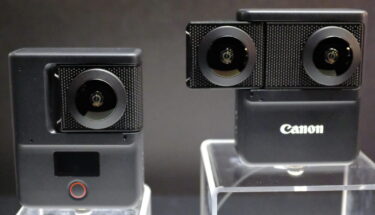
The 180-degree stereoscopic format is experiencing a resurgence. What VR180 cameras are coming, and will smartphones replace cameras?
By Daniel Pohl
Virtual reality headsets have opened up new ways of viewing spherical media. Many people are already familiar with 360° photos as panoramas in the web browser on the 2D monitor, in which you can change the viewing angle with the mouse. In VR devices, these kinds of media can be viewed in a much more immersive way, and you feel as if you are actually at the center of the shot.
Because of head tracking, head movements are matched 1:1 as in reality and the headset displays the correct view as in real-life. 360-degree media has had a followership since at least the Samsung Gear VR in 2015.
Content
180-degree 3D content: a popular format
Monoscopic 360° images can be created relatively easily with standard consumer 360-degree cameras, rendering tools for artificially generated content and cell phone apps that instruct the user to rotate in all directions. However, 360-2D recordings have the problem that the lack of stereoscopic depth means that closer objects appear huge and therefore unrealistic. In addition, it can often be difficult for content creators to ensure that the entire 360° of the environment is interesting and does not show the photographer, lighting, or other photographic aids.
For these reasons, among others, more and more immersive media makers are turning to the VR180 stereo format. Two images are shot simultaneously with two very wide-angle fish eye lenses, usually around 190°. In contrast to 360°, no stitching is necessary here, as the entire desired content of 180° or 190° was captured with the lenses. The fish eye photos are then normally converted into an equirectangular format. Similar to a rectangular world map created from a round globe.
Thanks to the 3D format, the proportions in VR180 content are now correct. Unwanted objects in the shot behind the camera are no longer visible, as only the hemisphere was shot towards the front. Many VR photographers therefore find this format both more immersive and much easier to create.
Ups and downs of the technology
The first consumer VR180-3D camera was the Lenovo Mirage Camera in 2018, which was developed in collaboration with Google under their Daydream VR project. At a price of €300, the camera offered a unique opportunity to make entirely new VR recordings.
While Google finally said goodbye to its Daydream VR ambitions in 2020, there were a few other consumer cameras at the time (Insta360 EVO, Vuze XR), but their support ended shortly afterward.
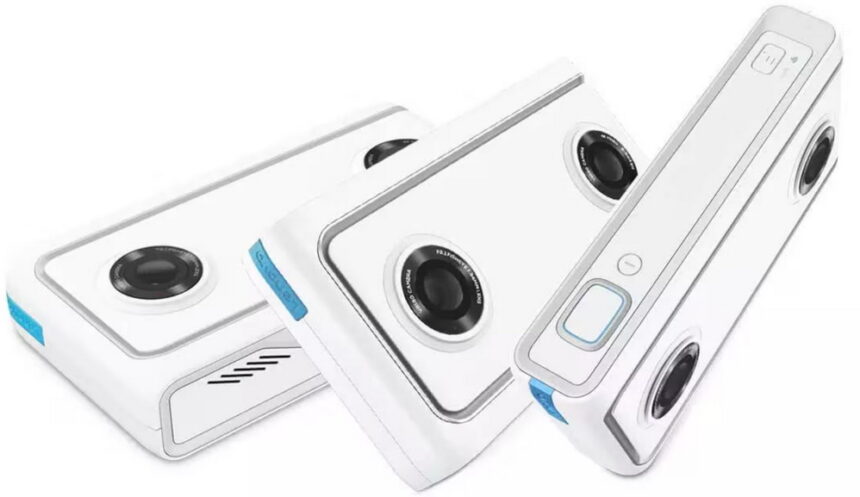
Lenovo Mirage Camera | Image: Lenovo
The topic had cooled off, while the death of VR was already being predicted in 2020.
New life for VR 180
At the end of 2021, however, there was a surprise for VR180: Canon released a professional VR180 stereo lens, the Canon RF 5.2 mm F2.8 L Dual Fisheye (Amazon). With the common mirrorless Canon Camerabody EOS R5 (Amazon) and R5 c (Amazon) you could now produce high quality 8K VR180 photos and videos (R5: 8K@30fps, R5 c: 8K@60fps).
All this using a single image sensor, which also eliminates possible color differences when using two sensors. Unfortunately, at over $6,000 for the camera body and lens, the offer was not affordable for everyone.
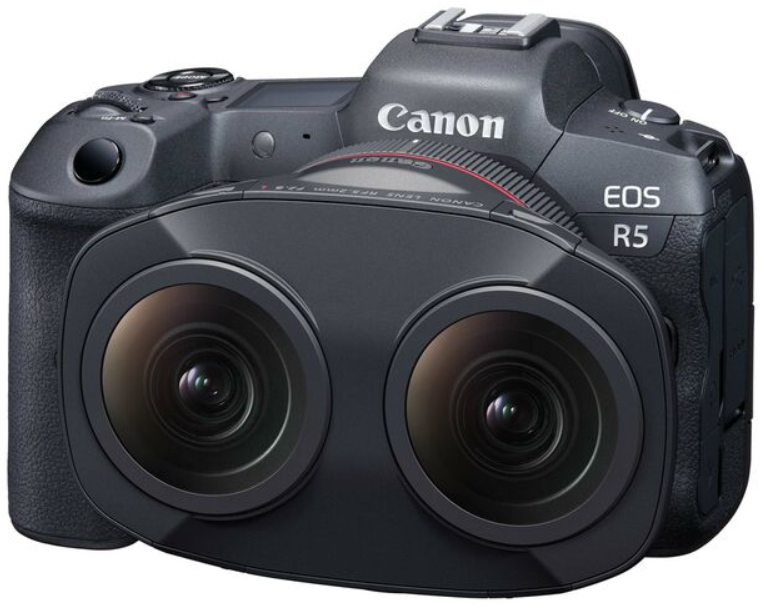
Canon R5 VR 180 | Image: Canon
There has recently been a new series of other VR180 cameras in different price ranges. The Kickstarter project “Calf” has offered its 8K photo, 6K@50fps video VR180 camera for $1,399 which is currently being shipped to backers.
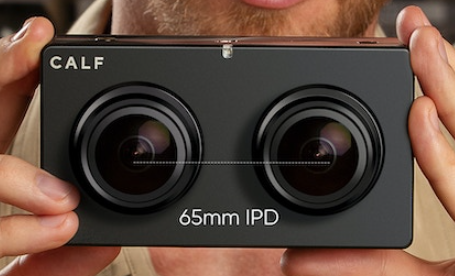
CALF VR 180 | Image: CALF
The TECHE 3D180VR is priced slightly higher at $4,225 with 8K@30fps video and 8K photos.

TECHE 3D180VR | Image: TECHE
This means that it is still difficult for consumers expecting a camera in the price segment below $1,000 to get their hands on a new VR180 camera.
Used VR180-3D cameras such as the Insta360 EVO (6K) are now occasionally offered for over $600, which is pricier than the starting price of $379 in 2019.
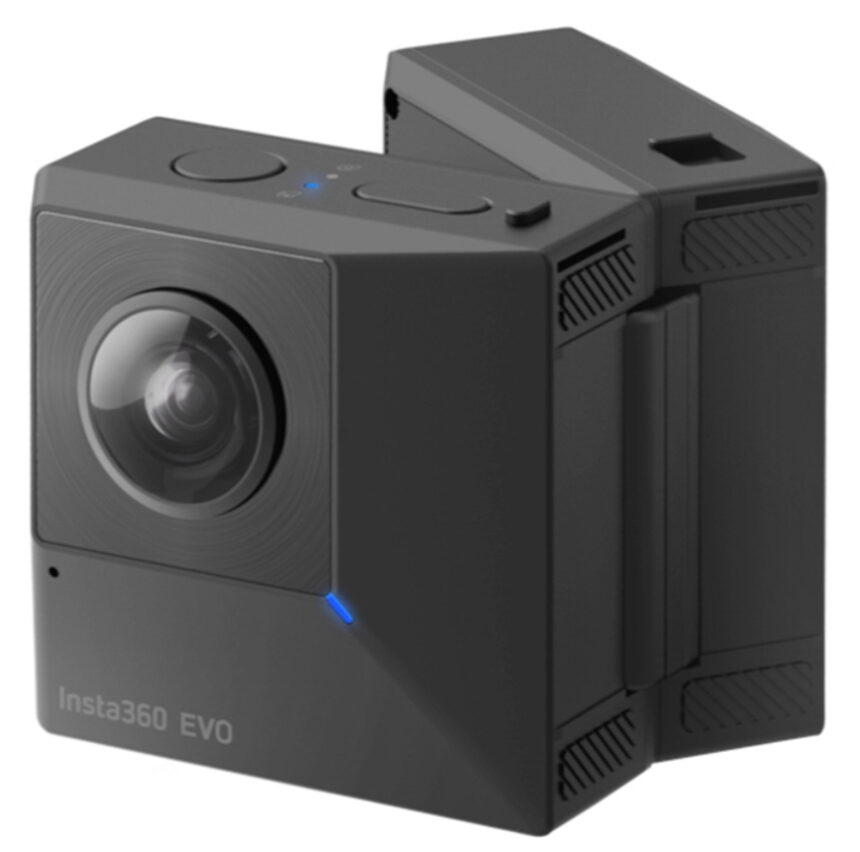
Insta360 EVO | Image: Insta360
Hopes are once again pinned on Canon, who have shown a prototype of a foldable VR180-3D / 360-2D camera. Mixed colleague Tomislav headlines this as “Canon copies Insta360” and thus captures the concept well.
The camera has now been shown again as a prototype at the IBC 2023 trade fair. Some new details were revealed:
- Video capabilities: 8K@30fps
- The photo resolution was not explicitly mentioned, but 8K can also be assumed here
- The camera has a small screen on one of the two sides
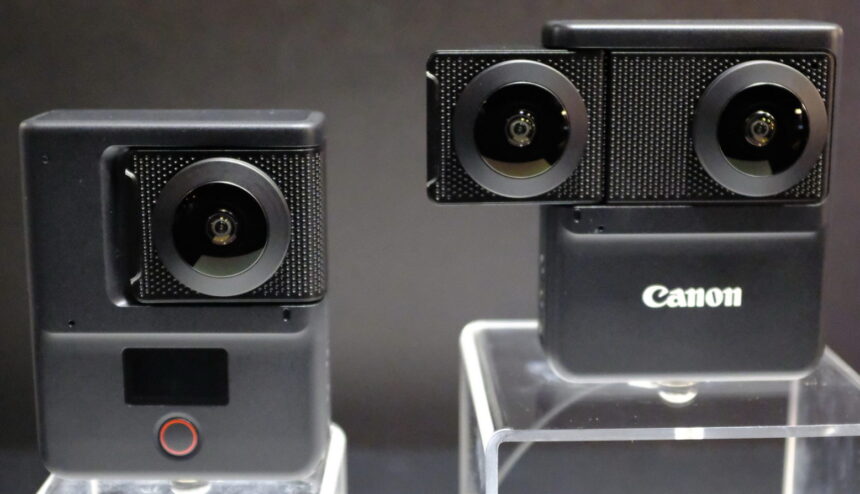
Canon Foldable | Image: DIYPhotography, Alex Baker
The screen is particularly important, as the previous consumer VR180 cameras (Lenovo Mirage Camera, Insta360 EVO, Vuze XR) had no display at all. Although there was the complicated option of pairing the camera with the smartphone and accessing more information and settings there, this was often cumbersome in practice. We hope that this is a touchscreen that at least allows small changes to settings, e.g., HDR on/off or quick changes to exposure times.
Incidentally, as we have learned, such exhibition models, which are deliberately not shown in operation, are relatively empty inside. The electronics are completely removed from these models. To still get an authentic feeling of holding the model, the weight in the exhibit is simulated using sand.
Even if showing prototypes is no guarantee of a product being released, we assume that Canon is serious about this. Canon's efforts in the VR180 area have only recently been reinforced with further firmware and software updates to the professional camera bodies for the 5.2 mm VR180-3D lens.
VR180 3D with the smartphone
“The best camera is the one you have with you” is a saying often heard among photographers. This is where the new announcement from Chinese company slamphone lnc comes in. They are announcing the first VR180-3D smartphone via an Indiegogo project that will be launched soon. In addition to photo and video support, livestreaming will also be available.
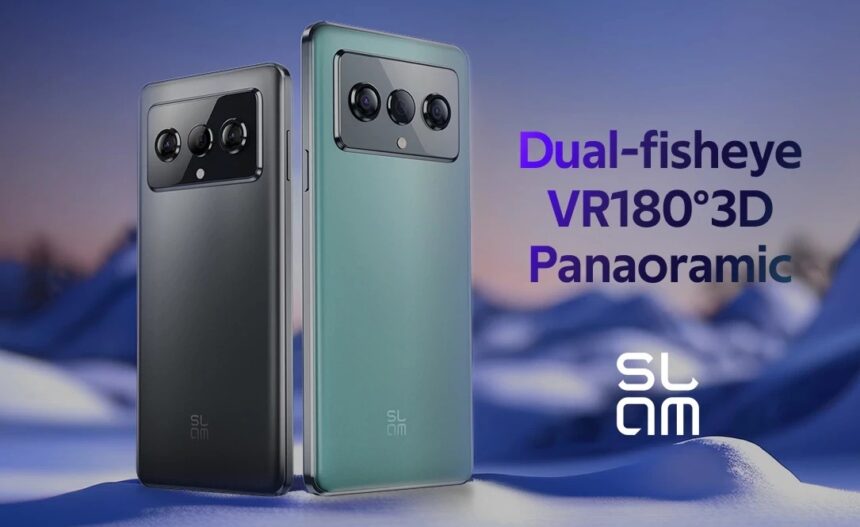
slamphone | Image: Slamphone Inc.
According to pictures on the website, their smartphone “SLAM” is classified in the $300+ range. The “+” sign, of course, leaves the upper limit. After possible “unexpected” price increases, it could be estimated that this smartphone could be available in the $400 to $600 range in the future.
This makes it a very exciting option for consumers who want to create VR180 photos and videos at any time. However, there is also a concern here: ideally, if you aim to create a stereoscopic image of reality, the camera distance should be approximately the interpupillary distance (IPD), which is 63 mm on average for adults. There are exceptions for artistic reasons or in 3D macrophotography — but the device is mainly aimed at regular consumers. The exact dimensions of the SLAM phone are not yet known, but the images suggest a maximum distance of 3 cm between the camera lenses.
When asked about this, the manufacturer replies on Youtube that this will be fixed in software and that the smartphone would be too wide at 65 mm. When I asked why the 3D cameras were not arranged in the other dimension on the smartphone with the desired distance between them, it was pointed out that this would cause difficulties with the positioning of the hand when holding the smartphone. This is somewhat reminiscent of “You're holding it wrong”. One could well assume that the smartphone user would get used to a corresponding camera setup when holding it.
Incidentally, the Chinese manufacturer slamphone Inc also provides a final outlook, pointing out that they have another project where the distance between the lenses is 65 mm. Speculatively, it can be assumed that this could be a tablet with VR180-3D cameras. So perhaps the arrival of semi-spherical 3D media on the tablet market is closer than expected.
Speaking of Apple: with the announcement of the new iPhone 15, the Pro version and Pro Max will also have 3D camera functionality in their smartphones following a future update to iOS 17.2. However, these generate low field-of-view (short-angle) 3D images. This is more like what we know from 3D TV or 3D cinema, and not content in the semi-spherical VR180-3D format. Apple also has the same challenge here as the SLAM phone: the cameras for capturing the 3D images are far away from the desired human eye distance. Compensation in software will also be necessary here, although Apple has the greater resources in this area and the problem should be somewhat easier to solve with short-angle 3D content.
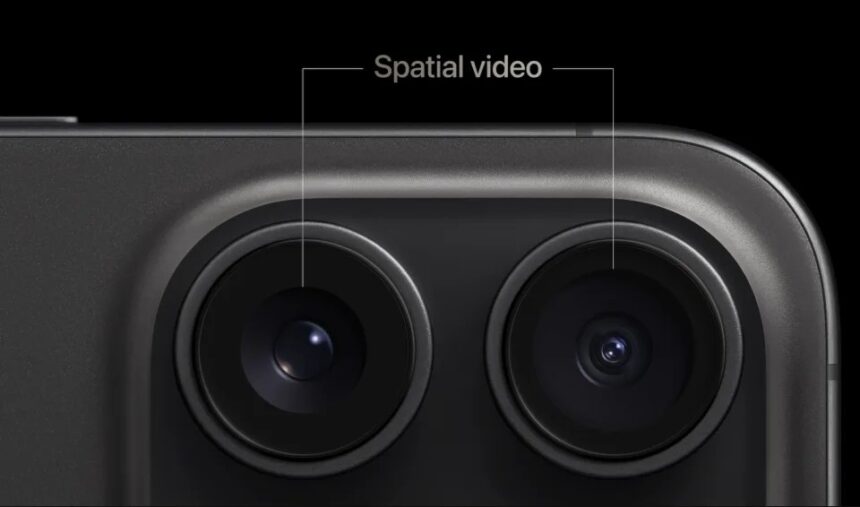
Iphone 15 Pro | Image: Apple
Apple also has the same challenge here as the SLAM phone: the cameras for capturing 3D images are far removed from the desired human eye distance. Compensation via software will also be necessary, although Apple has the greater resources in this area and the problem should be somewhat easier to solve with short-angle 3D content.
It remains exciting, and we will be happy to continue reporting on this new media sector for you. What are your experiences with VR180 media? Do you have a 3D camera? Do you use the Quest 3 for 3D recordings? Let us know in the comments!
The author, Daniel Pohl, is CEO and founder of immerVR GmbH. There, Daniel works daily on innovations in the field of immersive media, mostly in the area of VR180 stereo photography. With his app immerGallery, you can experience immersive photo galleries with voice-overs and background music in various VR formats on Meta Quest headsets.
Note: Links to online stores in articles can be so-called affiliate links. If you buy through this link, MIXED receives a commission from the provider. For you the price does not change.